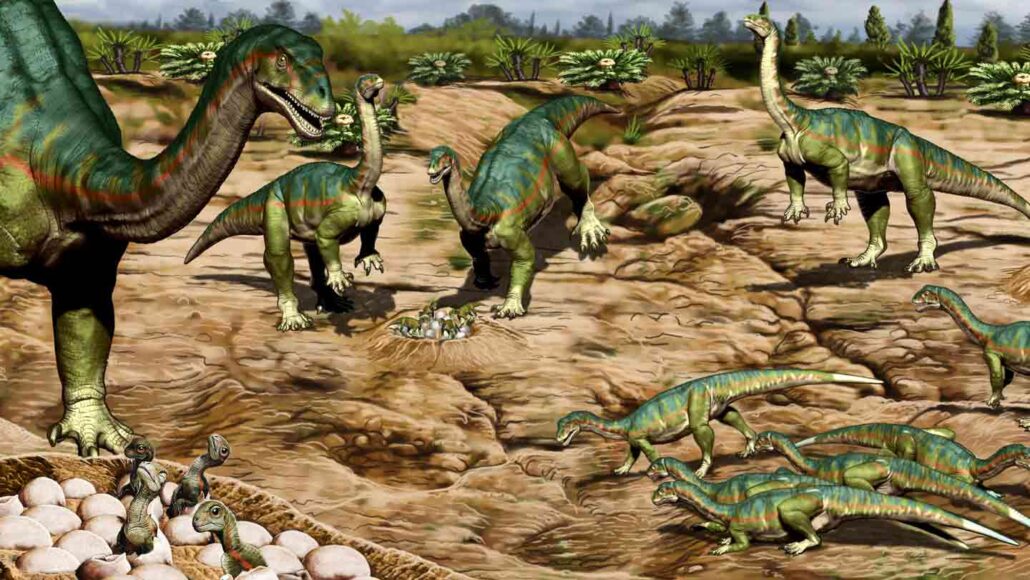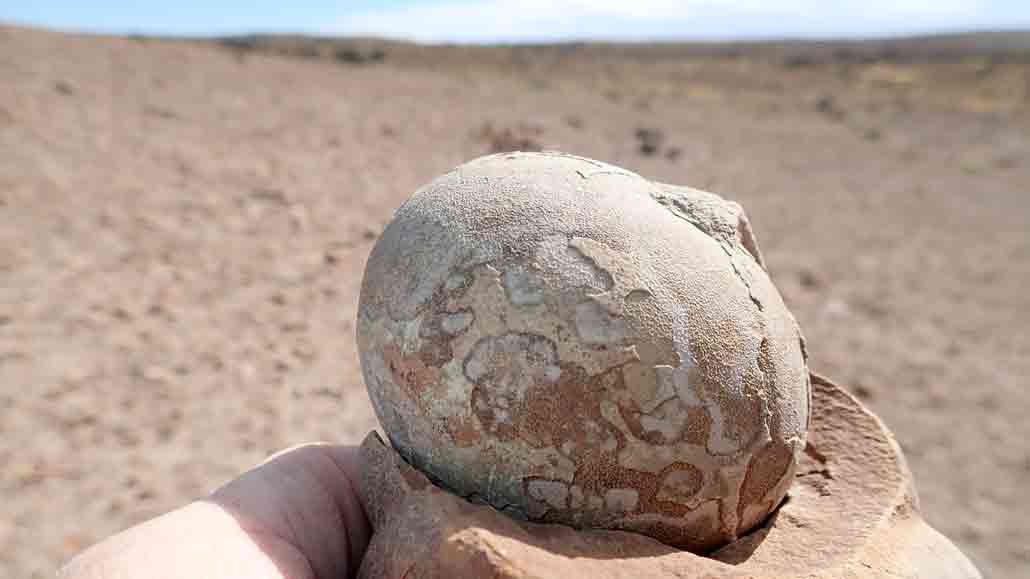Apatosaurus: A dinosaur whose name means deceptive lizard. It has a long neck and thick, whip-like tail. It lived during the Jurassic period, about 150 million years ago. In adulthood, this plant-eater would have weighed some 36 metric tons (40 short tons) and had an average length of perhaps 23 meters (75 feet). That would have made it one of the largest animals to ever roam the Earth.
behemoth: A term for anything that is amazingly big. The term comes from a monstrous animal described in the Bible’s book of Job.
clutch: (in biology) The eggs in a nest or the hatchlings from that collective group of eggs.
dinosaur: A term that means terrible lizard. These reptiles emerged around 243 million years ago. All descended from egg-laying reptiles known as archosaurs. Their descendants eventually split into two lines. For many decades, they have been distinguished by their hips. any large dinosaurs died out around 66 million years ago. But some lived on. They are now the birds we see today.
forage: To search for something, especially food. It’s also a term for the food eaten by grazing animals, such as cattle and horses.
fossil: Any preserved remains or traces of ancient life. There are many different types of fossils: The bones and other body parts of dinosaurs are called “body fossils.” Things like footprints are called “trace fossils.” Even specimens of dinosaur poop are fossils. The process of forming fossils is called fossilization.
hatchling: A young animal that recently emerged from its egg.
Jurassic: Lasting from about 200 million to 145.5 million years ago, it’s the middle period of the Mesozoic Era. This was a time when dinosaurs were the dominant form of life on land.
juvenile: Young, sub-adult animals. These are older than “babies” or larvae, but not yet mature enough to be considered an adult.
paleontologist: A scientist who specializes in studying fossils, the remains of ancient organisms.
sauropod: A very large, four-legged, plant-eating dinosaur with a long neck and tail, small head and massive limbs.
species: A group of similar organisms capable of producing offspring that can survive and reproduce.
Triassic Period: A time in the distant geologic past, about 200 million to 250 million years ago. It’s best known as the period during which dinosaurs first emerged.
trove: A collection of valuable things.









